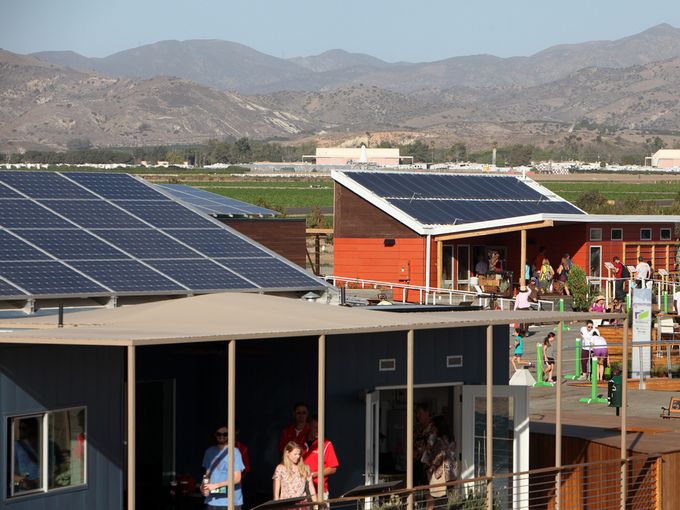
Solar Decathlon Comes to Orange County
October 14, 2013
Every two years, the U.S. Department of Energy sponsors The Solar Decathlon, a competition for students to showcase cutting-edge designs in sustainable living. Previously the prestigious competition was held on the National Mall in Washington, DC, but when organizers said they were looking for a new home, Chapman Political Science Professor Fred Smoller proposed that they bring it to Orange County.
For the first time in the event’s ten-year history, the Solar Decathlon is being held someplace else. Nineteen teams of college students from around the globe were selected to construct homes from plans they designed on an old runway at the Orange County Great Park. Most of the 19 teams are from the U.S., but this year’s competition includes two from Canadian Universities, one from the Czech Republic and one from Austria.
(The 2013 Solar Decathlon – D.O.E. Photo)
The houses show what is possible when students draw upon imagination and ingenuity to create prototypes for a new generation of houses. All the finalists were required to build houses that generated more energy than they used, as a result, solar panels were part of every design. In addition, houses were limited to a maximum footprint of 1,100 square feet and had to be constructed for a cost of $250,000 or less.
Thanks to a Chapman Sustainability Across the Curriculum grant, the Chapman Community was able to experience the Solar Decathlon up-close. Regular shuttles were available for individual students and entire classes to visit the event and examine the houses. This included Professor Shafie’s Public Policy class (POSC 375), which includes a number of Environmental Science and Policy majors, as well Environmental Studies minors.
Judging was underway all last week, and prizes have been presented for ten categories, including affordability, architecture, engineering, and market appeal, with team Austria taking home the 1st place prize. For more information and to see the full results, visit the
DOE wesbite
.
Special thanks to the author of this post, Professor David Shafie.